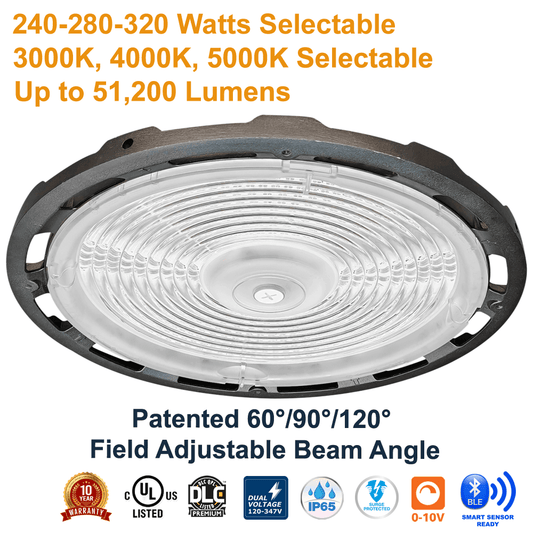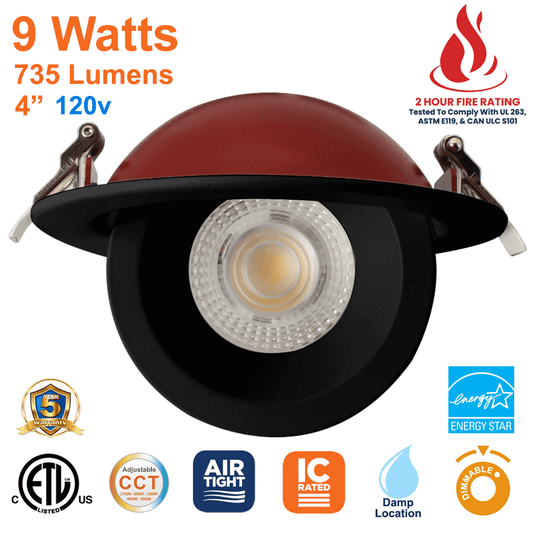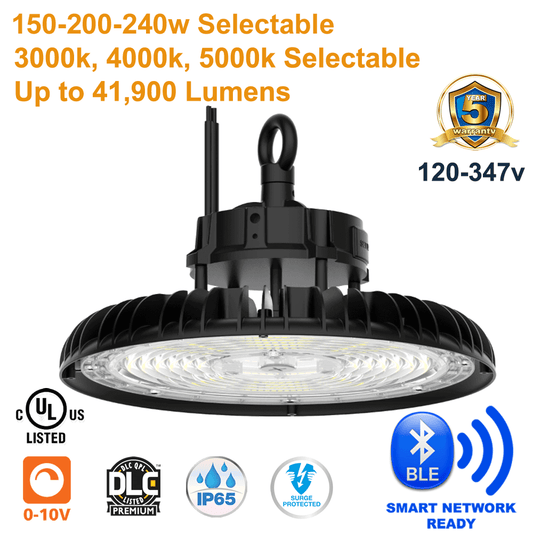What Is An LED?
Light Emitting Diodes, or LEDs, are tiny yet powerful devices that emit light when an electric current is passed through them. They have rapidly become popular for their energy efficiency, long lifespan, and versatility, making them the go-to choice for lighting, displays, indicators, signals, and more. In today’s article, we'll take a closer look at what LEDs are, the basics of how they work, their main components, and a lot more.
How Was LED Invented?
The first LED was invented by Nick Holonyak Jr. in 1962 while he was working at General Electric. Holonyak's LED produced a red light and marked the first time a practical LED had been created. Since then, LED technology has continued to evolve and expand, with LEDs now available in a wide range of colors and sizes, used in many applications.

How Do LEDs Work?
LEDs are made by growing a semiconductor material, such as silicon or gallium nitride, and then doping it with impurities to create a p-n junction. The p-n junction is then encapsulated in a package with electrical leads, a lens, and other components to form the complete LED.
When an electric current is applied to the p-n junction, electrons and holes combine, releasing energy in the form of photons (light). The color of the light emitted by an LED depends on the material used and the type of impurities added.
What Is A P-N Junction?
A p-n junction is a boundary between two types of semiconductors, p-type (positive) and n-type (negative), within a single crystal. In an LED, the p-type material has a surplus of holes (positive charges) and the n-type material has a surplus of electrons (negative charges). When an electric current is applied to the p-n junction, electrons and holes combine, releasing energy in the form of photons (light). The p-n junction is the key component that makes LEDs work, as it allows the release of light through the recombination of electrons and holes.

LED Applications
Today, LEDs are used in a wide range of applications, including:
- Lighting: LED lights are widely used for home and commercial lighting due to their energy efficiency and long lifespan.
- Displays: LEDs are commonly used in display screens, such as those found in televisions, smartphones, and computer monitors.
- Indicators: LEDs are often used as status indicators, such as in car dashboards, appliances, and electronic devices.
- Signals: LEDs are used in traffic signals, brake lights, and turn signals, among others.
Do LEDs Harm Your Eyes?
LED lights, like any other light source, can cause eye strain if used for extended periods of time. However, LED lights do not cause damage to your eyes. In fact, LED lights have a number of advantages over other light sources, such as being energy efficient, long-lasting, and producing less heat.
It is important to use LED lights in a way that reduces eye strain, such as using proper lighting levels and avoiding glare. Additionally, using LED lights that are designed to reduce flicker and produce a high-quality light can also help reduce eye strain.
In general, LED lights are considered to be safe for use and do not cause damage to your eyes when used properly. However, if you experience any discomfort or eye strain when using LED lights, it is best to consult with an eye doctor to determine the cause of the problem.
What Are The Benefits Of LEDs?
There are many benefits to using LEDs, including:
- Energy Efficiency: LEDs consume less power compared to traditional light sources, making them an eco-friendly and cost-effective option.
- Long Lifespan: LEDs can last for tens of thousands of hours, much longer than traditional light sources.
- Versatile: LEDs come in a variety of shapes, sizes, and colors, making them suitable for a wide range of applications.
- Durable: LEDs are solid-state devices, meaning they are not prone to breakage or damage from vibration.
- High-Quality Light: LED technology has improved in recent years, making it possible to produce high-quality lighting with LED systems that are competitive with other lighting technologies.

Are LEDs Designed To Fail?
No, LEDs are not designed to fail. However, like all electronic devices, they have a limited lifespan and will eventually fail due to factors such as overheating, electrical overstress, aging, and mechanical stress.
There are several factors that can cause LED lights to fail, including:
- Overheating: Overheating can cause LEDs to fail by damaging the internal components of the device.
- Electrical overstress: Applying too much electrical current to an LED can cause it to fail.
- Aging: Like all electronic devices, LEDs have a limited lifespan and will eventually fail over time.
- Mechanical stress: Dropping or applying physical pressure to an LED can cause it to fail.
Are Some LEDs Better Than Others?
Yes, some LED chips can be better than others and there are several factors that contribute to the difference in quality. These include:
- Material Quality: The quality of the materials used to make the LED chip can affect its performance and reliability. Higher quality materials, such as indium gallium nitride (InGaN) and aluminum gallium indium phosphide (AlInGaP), are more expensive but offer better performance and a longer lifespan than lower quality materials.
- Manufacturing Process: The manufacturing process used to produce the LED chip can also affect its quality. The use of advanced technologies, such as molecular beam epitaxy (MBE) and metal-organic chemical vapor deposition (MOCVD), can result in higher quality LED chips.
- Chip Design: The design of the LED chip, including its size and shape, can impact its performance and efficiency. For example, a larger LED chip may provide brighter light output, but may also generate more heat and be less efficient.
- Binning: LED chips are sorted into different "bins" based on their performance characteristics, such as brightness, color, and efficiency. Higher quality LED chips will typically be binned into a higher bin and offer better performance than lower quality chips.
In summary, some LED chips can be better than others due to differences in material quality, manufacturing process, chip design, and binning. When selecting an LED chip, it is important to consider these factors and choose a chip that meets your specific performance and reliability requirements.

How Long Should An LED Last?
The lifespan of an LED is determined by several factors, including the quality of the LED and the driver, operating temperature, and the conditions in which it is used. LEDs can be rated to last between 25,000 and several hundred thousand hours. The typical LED is built to last around 5-10 years of continuous use. However, this lifespan can be extended with proper design and use, including using high-quality components, controlling operating temperature with a heat sink, and reducing the frequency and duration of high-current or high-temperature events.
It is important to note that LED lifespan is typically defined as the point at which the LED has reached 70% of its initial light output, and not the point at which it fails completely. LED lights may continue to work after this point, but their light output will have declined significantly, making them less effective for their intended purpose.
In general, LED lighting is considered a reliable and long-lasting lighting technology, with a much longer lifespan than traditional incandescent or fluorescent lights. When selecting LED lighting, it is important to choose products from reputable manufacturers and to consider factors such as warranty and support, as well as the overall design and quality of the product.

When Did They Start Selling LED Lighting?
LED lights have been commercially available since the 1960s, when Nick Holonyak Jr. invented the first LED. However widespread adoption of LED lights as a general lighting source didn't start until the late 1990s and early 2000s, when advances in LED technology led to significant improvements in brightness, efficiency, and cost. Today, LED lights are widely used in a variety of applications and have become a popular choice for both residential and commercial lighting.
Advancements In LED Technology
LED technology is constantly improving, with new innovations and breakthroughs happening all the time. Some of the latest advancements in LED technology include:
- Smart LED Lighting: LED lights can be controlled and monitored using smartphones, voice assistants, and other smart devices.
- Organic LED (OLED) Displays: OLED displays offer higher contrast, faster refresh rates, and more flexible form factors compared to traditional LED displays.
- High-Power LED Lighting: High-power LED lighting systems are becoming more widely used for outdoor lighting, industrial lighting, and automotive lighting.
LEDs are a highly efficient and versatile light source that offers benefits over traditional light sources. As LED technology continues to advance, we can expect to see even more innovative and exciting applications in the years to come.

What Is The Future Of LED?
It is likely that future advancements will result in longer-lasting and more efficient LED lights. Here are some future predictions for LEDs:
- Increased Efficiency: The development of new materials and manufacturing processes is expected to result in even more efficient LED lights that use less energy and last longer.
- Wider Adoption: LEDs are already widely used in many applications, and their popularity is expected to continue to grow as the technology improves and costs decrease.
- Increased Longevity: Research and development efforts are focused on increasing the lifespan of LED lights, which will result in fewer replacements and reduced maintenance costs for users.
- Integration with Other Technologies: The integration of LED lights with other technologies, such as smart home systems, internet of things (IoT) devices, and energy management systems, is expected to increase in the coming years.
- Development of New Applications: As LED technology continues to advance, new applications will likely be developed, such as new lighting designs and innovative lighting solutions for various industries.
In summary, the future of LED technology is promising, and it is likely that LED lighting will become even more efficient, longer lasting, and widely adopted in the coming years.
Even though the future looks “bright”, for LED lights, today’s lighting already offers tremendous energy savings and long-term performance. If you’re working on an LED project, call us at 1-800-610-6112 or contact LED Network by email by clicking here.























